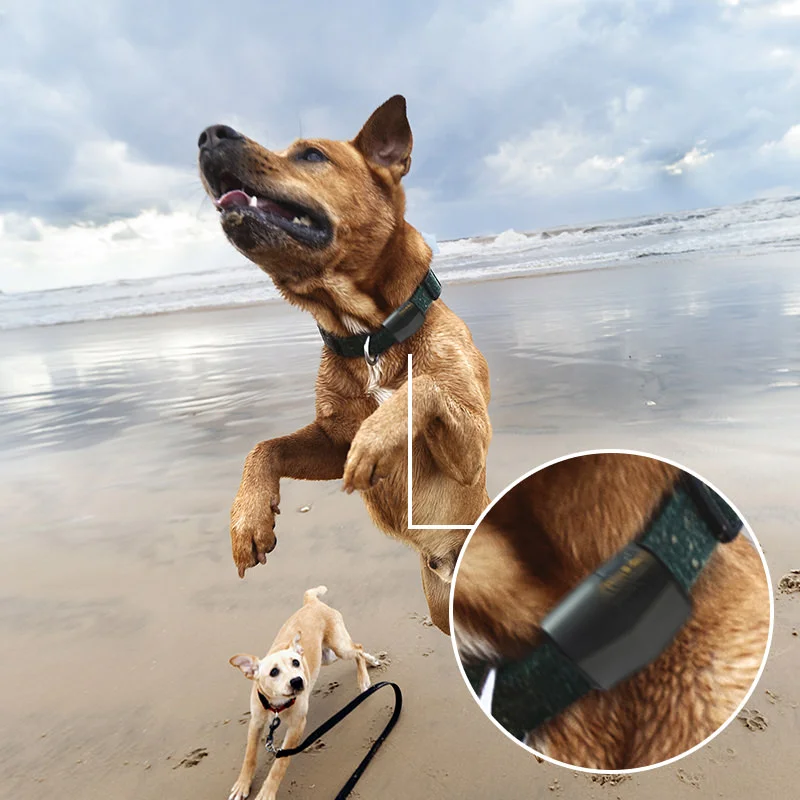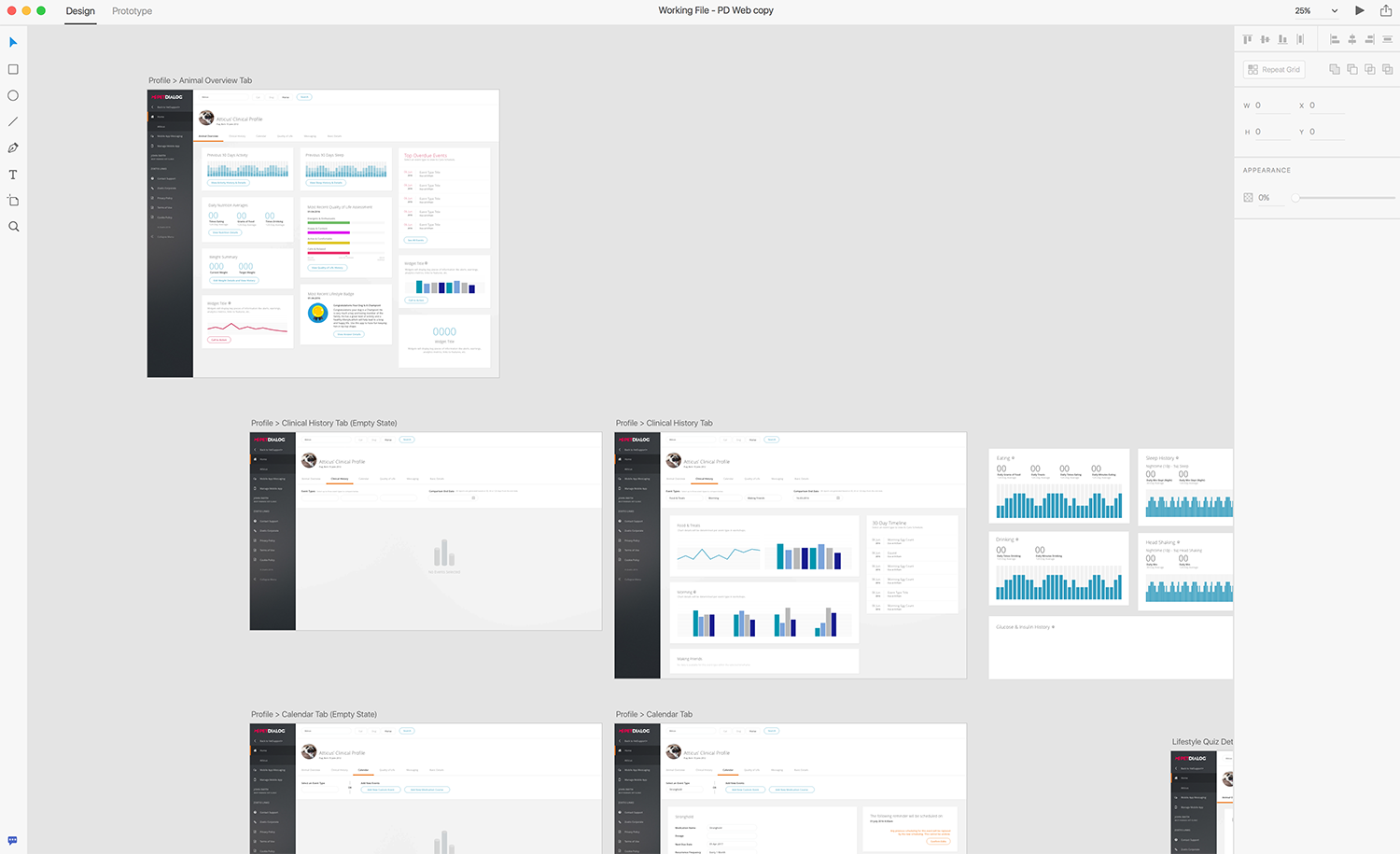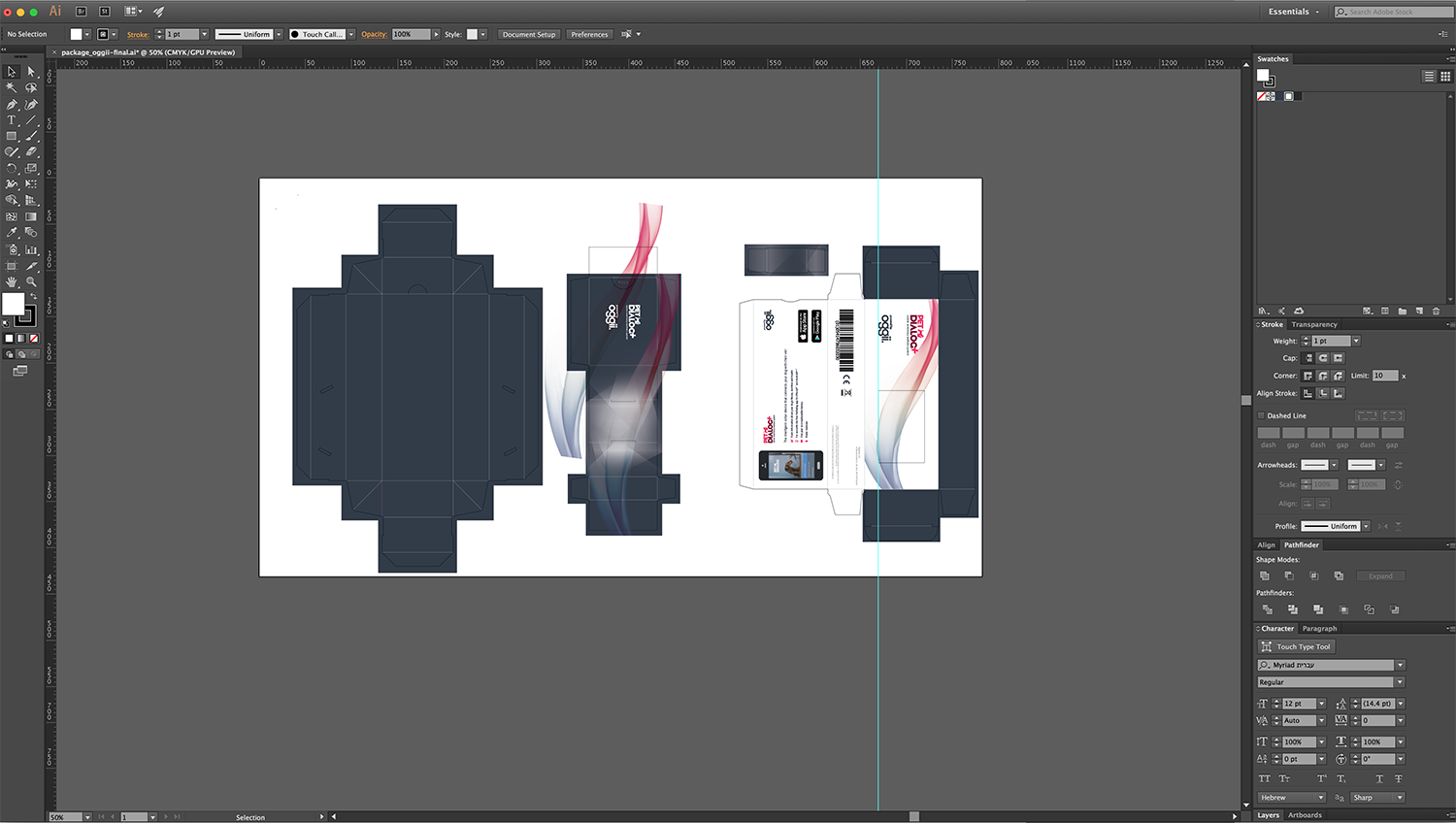Canine Wearable Wellness Monitor
Platforms: iOS, Android, Responsive Web
Main Roles: Digital Product Development, User Research, Data Research, Cross-Platform UX Strategy, Mobile UI Design
Additional Roles: Web UI Design, Device Design, Packaging Design, Front-End Development
Project summary
This project was a new experience for me as a product designer. My client was building a medical wellness device for pets, and I’d never before worked on a brand new physical IoT device. Previously, vets had relied on clinical signs and behavioural information provided by the pet owners to make diagnoses. As most pet owners are not vets and often work outside of the home, the assessment they provide may not be accurate or clinically adequate. This automatically translates to risk in diagnoses. PetDialog+ is a wearable wellness device that allows the animal’s behaviour to be monitored in real-time, 24 hours per day. The data collected by the device is integrated into a mobile and web application for the owners and vets to observe. I was responsible for the entire user experience for the device, as well as many aspects of the physical and algorithm designs.
About Zoetis
Since 1952, Zoetis (formerly Pfizer Animal Health) has been at the forefront of delivering quality animal health products and services for owners and veterinarians. Their goal is to provide solutions to the pains of animal caregivers. We developed a suite of web and mobile application to help pet owners and vets collaborate to provide adequate care for their animals.
The challenge
To design and produce a wearable device which integrated into Zoetis’ existing mobile and web applications.
Our team at Zoetis already had a mobile application that helped dog owners keep records of their pet’s basic information. The challenge with this was that most pet owners are not vets, and as such would not know what to look out for, and their records might not be consistent and accurate, therefore making them unreliable. Vets, on the other hand, depend on these records to make diagnoses. They also spend an average of 5-8 minutes at the start of every appointment gathering the same basic health and behaviour information. Existing solutions didn’t meet the growing need for proactive data-driven diagnosis, or an automated and easy way for pet owners to care for their pets.
To solve this problem, we set out to design a wearable wellness tracker that would track the medical state of the pet in eight states. Data collected was then processed into the mobile and web application in real-time.
I was responsible for the user experience for the device and accompanying apps, and stayed close with the development team from start to finish.
The design process
The process of designing a physical products is different from a digital product. To design a useful product, and one that meets the needs and expectations of our target users, we had to start with knowing what they want from a pet wearable wellness device. We were attempting to change their daily behaviour, which is one of the biggest challenges that a product can face.
“PetDialog+ is going through more rigorous testing than many current human fitness monitors.”
Understand and discover through research
The device was to be integrated into an existing application, so much of the demographic research had already been done. I worked with the technical team in charge of building the device to determine what data needed to be collected, what the physical and technical limitations were to the device, and how much control we had over the firmware of the device.
We worked with partners at University of Surrey to develop the data strategy. This research and data was used when developing my flow designs for this project.
I also performed market research on existing tracking applications to see how they present/display their data and the metrics they measured. From this research, we discovered that we needed to track eight states of the pet’s health.
Refine flows and UI design
The data collected from the wearable device needed to be integrated into the existing mobile and web application for the owners and vets to see. Adobe and Sketch were very heavily to produce wireframes and prototypes in this stage. Using our existing design language system, I provided Adobe XD and Sketch Files for new screens and states. This included UX specifications for colours, fonts, etc.
Building the app
I wrote the primary development specification, which included full acceptance criteria for all new features. I ran a tight documentation ship in Confluence and Jira. This included wireframes, flow diagrams, database schema drafts, and a large number of use cases.
Branding and packaging
Working closely with all stakeholders, I designed the device logo, the majority of the packaging for the device, and chose device colours in line with the app branding guidelines.
Results, press, and accolades
The final product was a wearable device that met our users’ physical and technical expectations, as well as the requirements for both the pet owner and vets.
“Great reminder, and love the fun side! Really struggled to remember all my cats medication until my vet got this app.”
“Useful and fun. Great to keep track of all our dogs meds and really helps the kids get involved in caring for a pet.”









